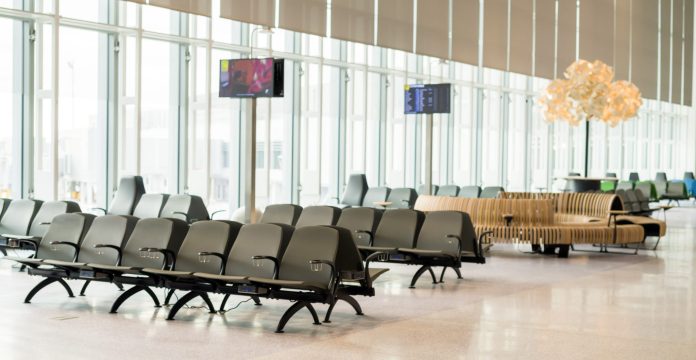Airport seating is much more than a set of chairs installed in a terminal. It is a vital component of the passenger experience, influencing comfort, safety, and overall perceptions of the facility. Because airport seating must withstand constant use, heavy loads, and frequent cleaning, manufacturers enforce strict quality control measures at every stage of production. From raw materials to final assembly, these measures ensure that each seating system meets the highest standards of durability, safety, and performance.
A reputable airport seating manufacturer applies proven quality management protocols to guarantee that every product delivered to clients reflects consistent excellence. Understanding these processes helps airport planners, architects, and procurement teams make informed decisions when selecting seating solutions.
Material Selection and Verification
The first step in quality control is choosing the right materials. Each component, whether it is the frame, upholstery, or fasteners, must be selected for its performance characteristics and compliance with safety regulations. For example:
- Frames: Typically manufactured from aluminum or steel alloys, frames must combine strength with corrosion resistance.
- Foam Padding: High-resilience foams are chosen for comfort and shape retention over years of use.
- Fabrics and Finishes: Upholstery must be fire-resistant, stain-resistant, and easy to clean.
Manufacturers work with certified suppliers who provide detailed material certifications. Upon arrival at the production facility, materials undergo inspection to confirm specifications, such as tensile strength, density, and fire safety compliance.
Precision Engineering and Fabrication
Once materials are verified, the fabrication process begins. Precision engineering is central to producing components that fit together perfectly and function reliably. Key measures during this stage include:
- CNC Machining: Computer numerical control machines cut and shape metal parts with extreme accuracy, reducing human error.
- Welding and Assembly Checks: Welded joints are inspected for integrity to prevent failures under load.
- Dimensional Inspections: Components are measured with specialized tools to ensure all parts meet exact tolerances.
At each step, operators document their work and confirm compliance with production specifications.
In-Process Quality Inspections
During assembly, manufacturers perform in-process inspections to identify any potential issues before final production. These inspections include:
- Visual Checks: Surfaces are examined for scratches, dents, or inconsistencies in finishes.
- Alignment Verification: Parts are checked to ensure they are correctly oriented and secured.
- Fastener Torque Testing: Bolts and screws are tightened to specified torque levels to maintain structural stability.
Detailed records are maintained so that any issues can be traced back to their source, reinforcing accountability and continuous improvement.
Performance and Durability Testing
Once assemblies are complete, seating units undergo rigorous performance tests to validate their durability and functionality. Common tests include:
- Load Testing: Seats are subjected to weights exceeding normal use conditions to simulate years of wear and tear.
- Cycle Testing: Moving parts, such as flip-up armrests or reclining backs, are operated thousands of times to confirm reliability.
- Fire Safety Testing: Upholstery and padding are tested to verify compliance with flammability standards.
- Corrosion Resistance Testing: Metal components are exposed to moisture and salt spray to ensure they can withstand demanding airport environments.
Only seating that passes all these tests moves to the next stage of production.
Surface Treatment and Finishing
After structural and functional testing, seating units receive final surface treatments and finishes. This process includes:
- Powder Coating or Anodizing: Protective coatings are applied to metal surfaces to enhance durability and appearance.
- Upholstery Application: Fabrics or synthetic coverings are installed with careful attention to uniformity and tension.
- Final Cleaning: Seats are cleaned and polished to remove residues or contaminants.
Each finished product is then visually inspected to confirm a flawless appearance before packing.
Pre-Shipment Quality Audits
Before shipment, quality control teams perform a comprehensive audit that includes:
- Cross-checking all documentation against production records
- Verifying that each unit matches the approved design
- Inspecting packaging to ensure protection during transit
Products are not released until all checks are complete and the quality assurance team signs off.
Installation Support and After-Sales Service
Quality control does not end when seating leaves the factory. Manufacturers often provide guidance during installation to ensure correct assembly and anchoring. Post-installation inspections confirm that seating is level, secure, and functioning as intended. Additionally, many manufacturers offer warranty coverage, spare parts, and maintenance support to preserve seating quality over time.
Conclusion
Quality control is at the heart of airport seating manufacturing. By combining material verification, precision engineering, in-process inspections, and rigorous testing, manufacturers create seating systems that meet the demands of high-traffic environments. These processes protect the airport’s investment, safeguard passenger safety, and reinforce a positive experience for every traveler who passes through the terminal. With a structured approach to quality, airport seating is built to perform reliably for years to come.



